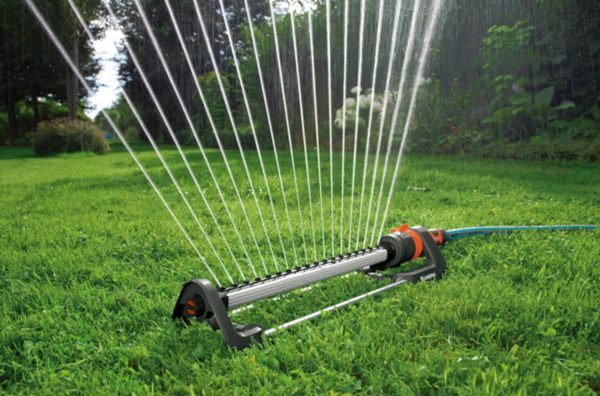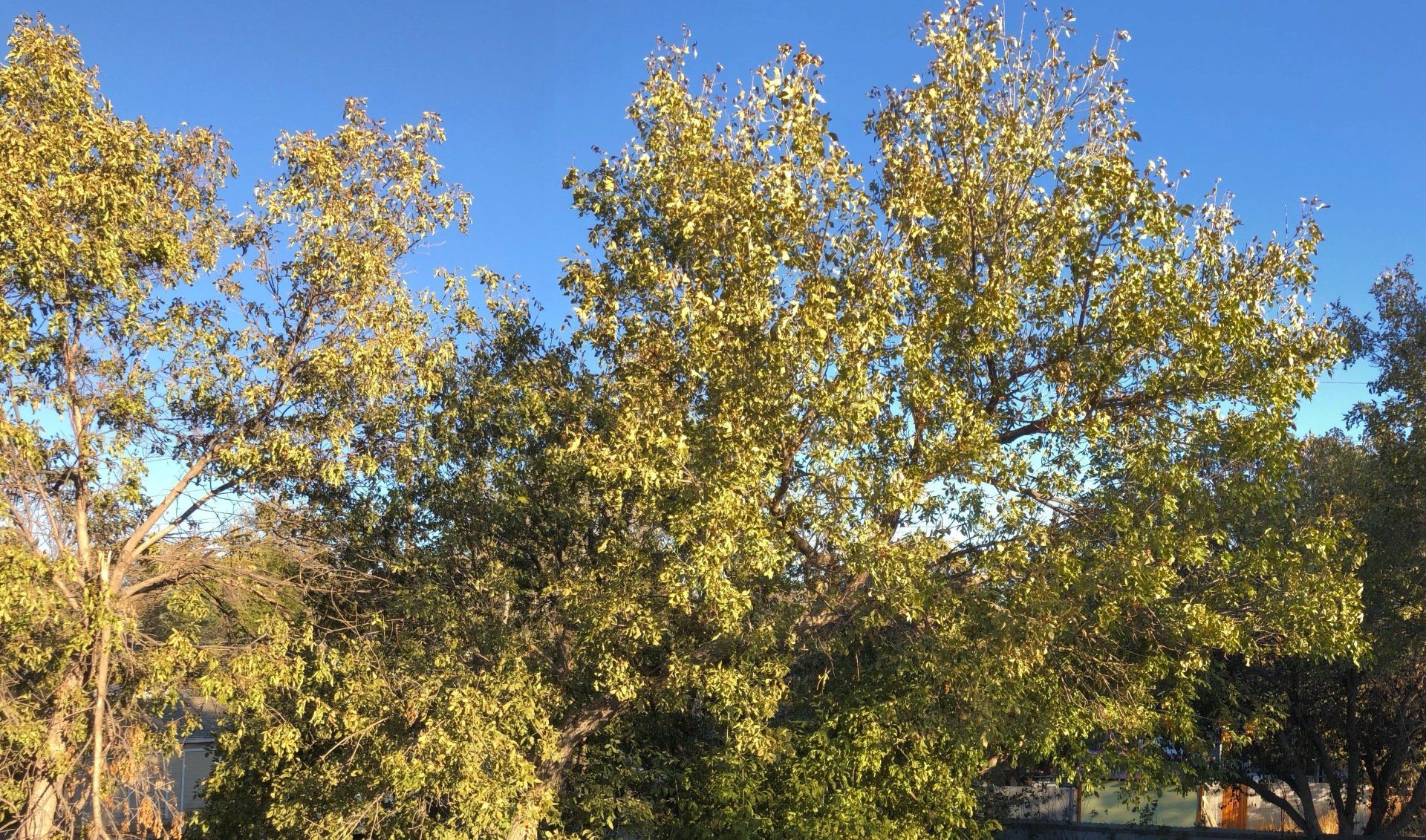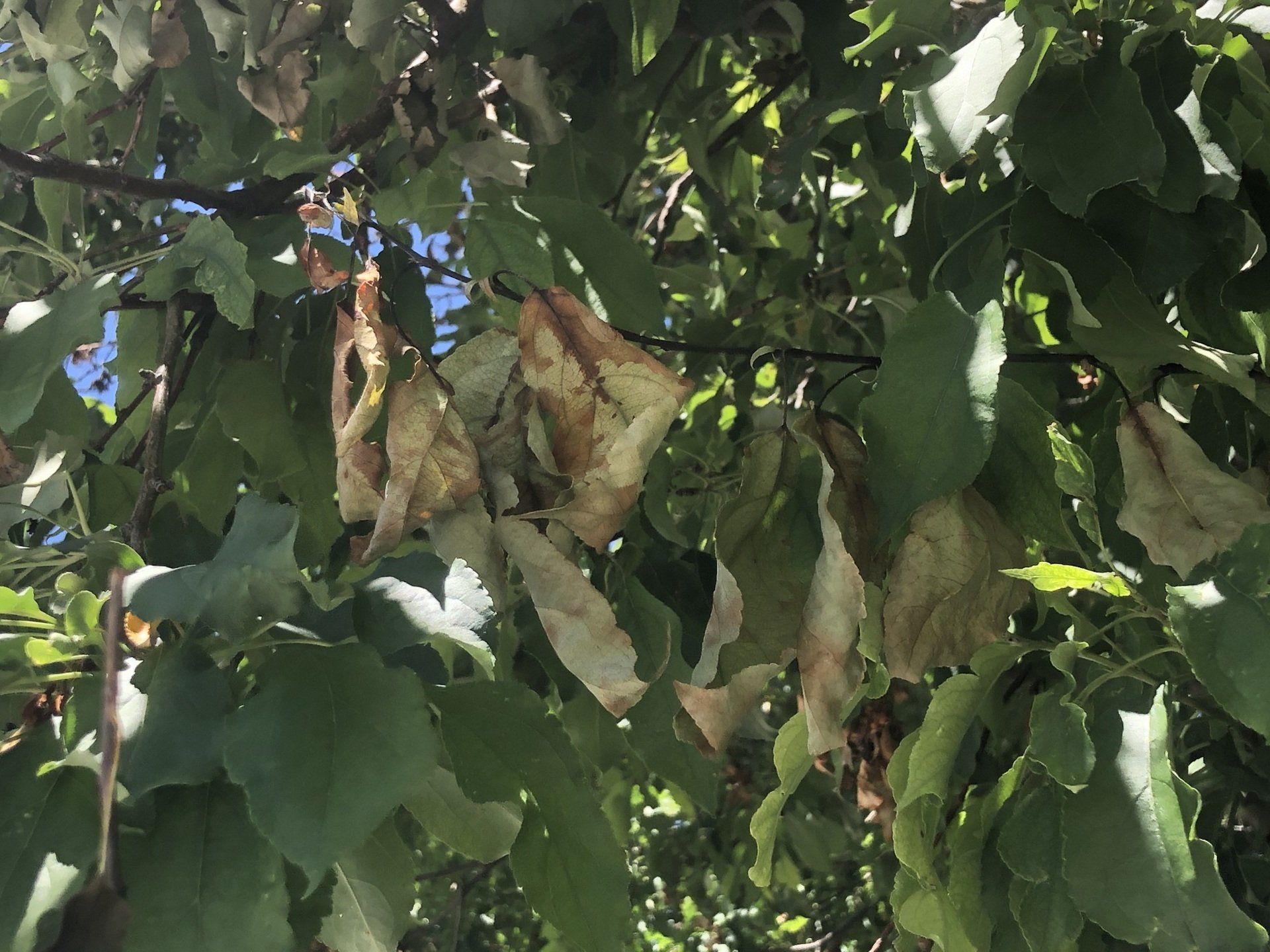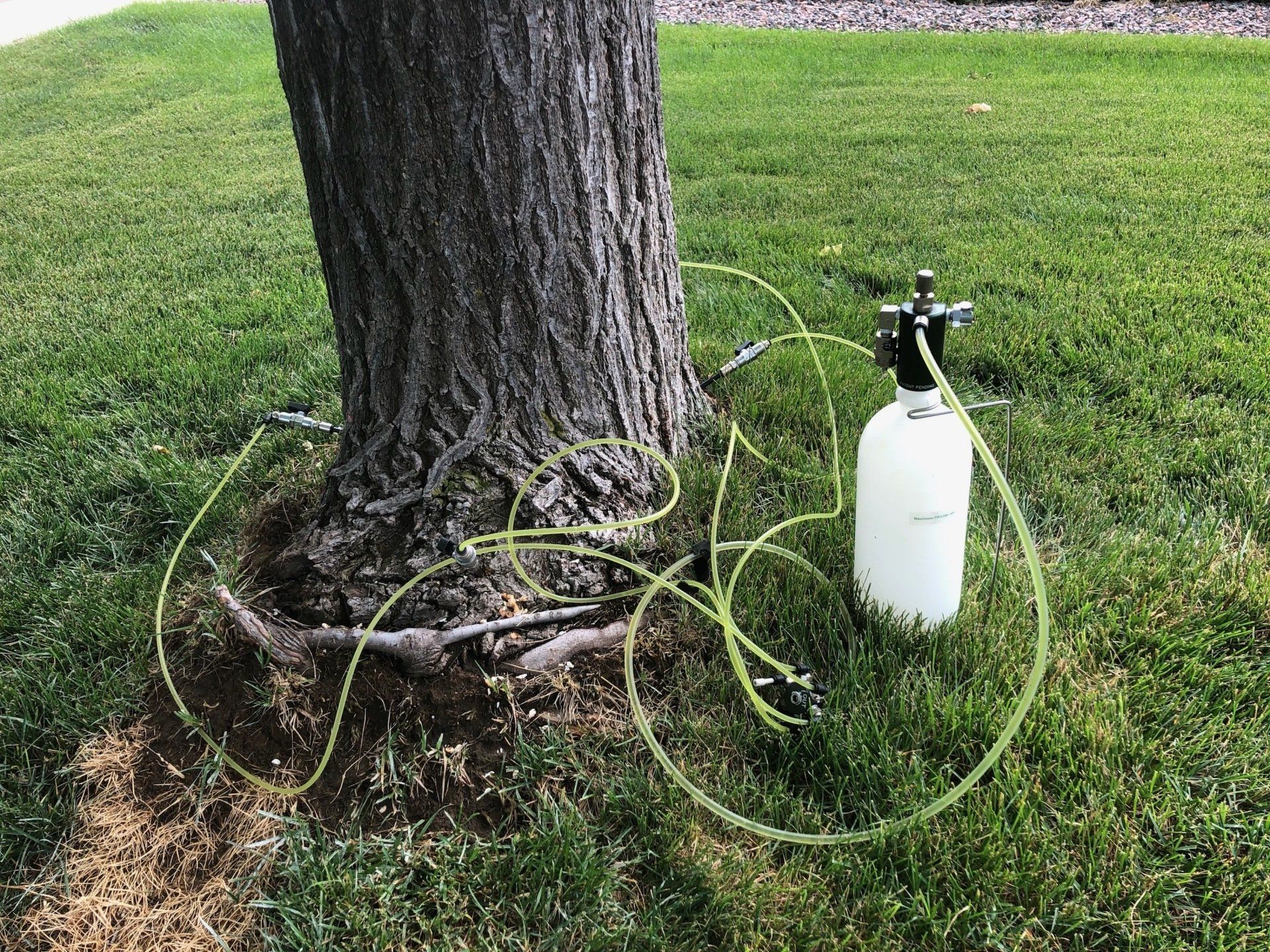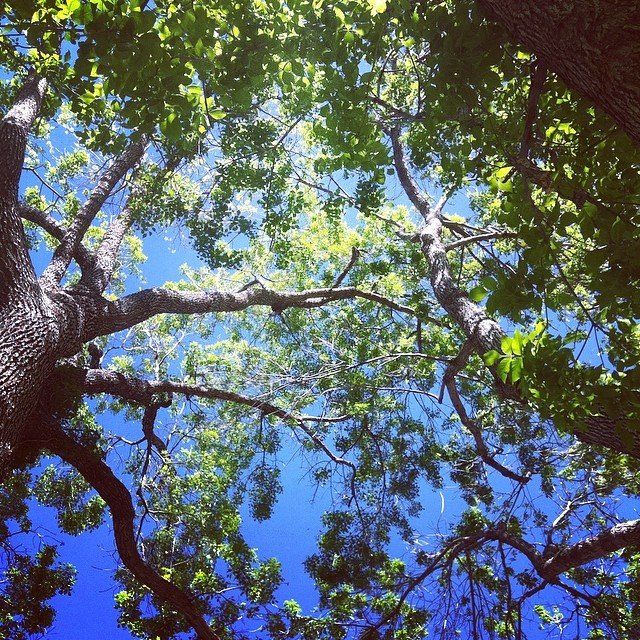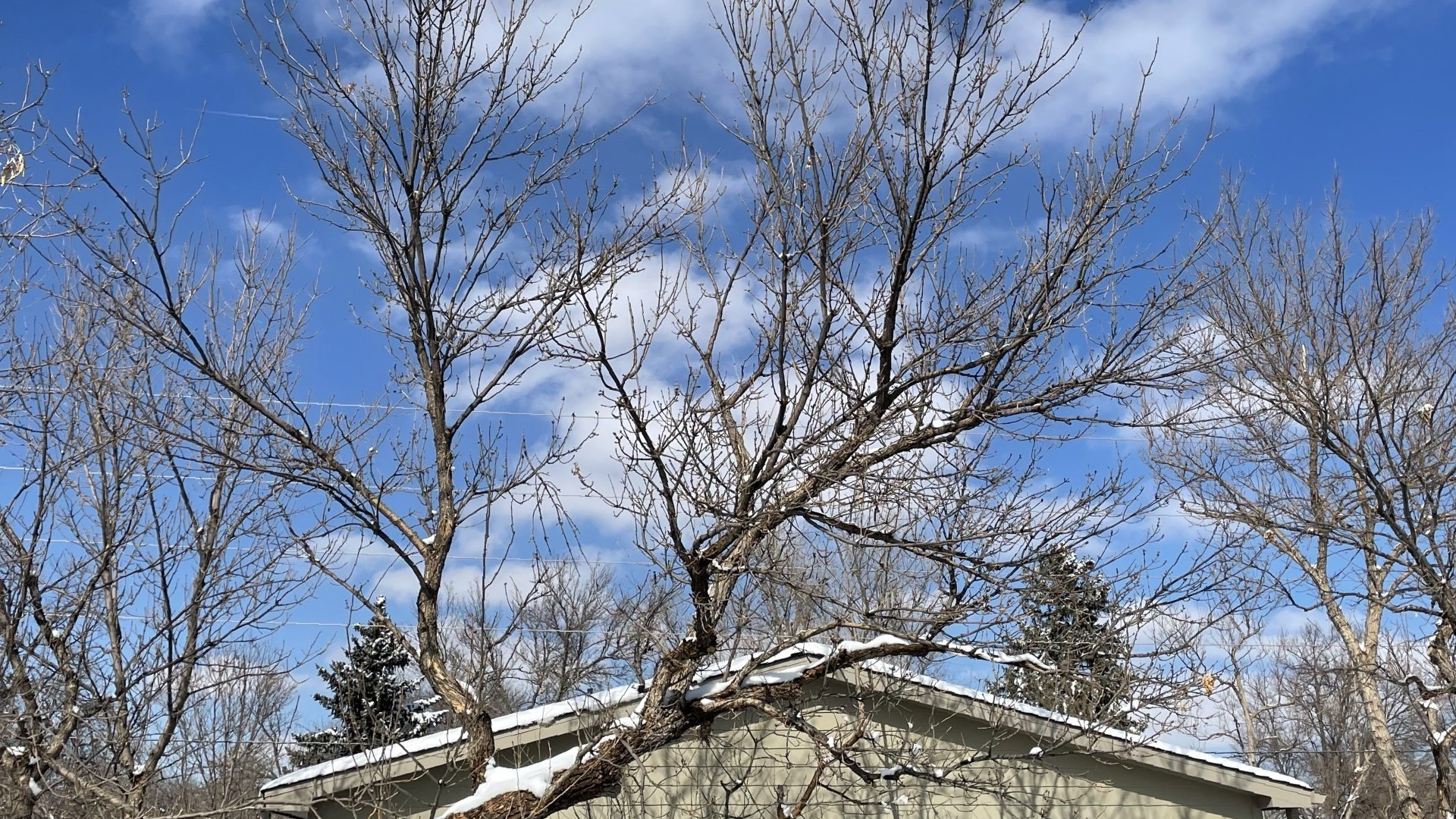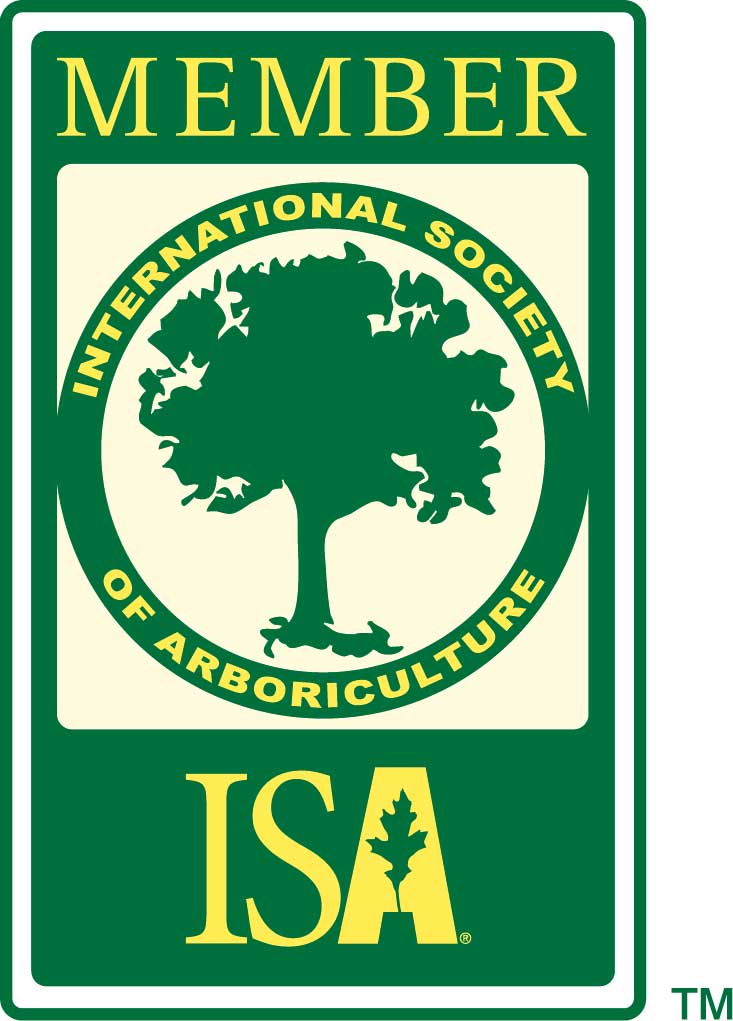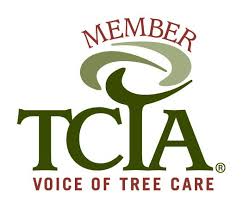Fire Blight
Lucas Capachin - Board Certified Master Arborist
Fire Blight
Here in Colorado, the trees typically damaged by fire blight are apple, crabapple, pear, hawthorn, and mountain ash. Fire blight is a bacteria (Erwinia amylovora) that damages trees in the family Rosaceae. The bacteria reproduce in the vascular system of the tree, preventing water and nutrients from properly circulating. This bacteria will live in the tree indefinitely and can eventually kill entire branches if not addressed. The easiest way to identify fire blight is by shoots dying back during the growing season. Affected branches will have a burnt appearance, hence the name - fire blight.

Prevention
Although you cannot kill the bacteria once it has colonized the vascular system, it can be prevented from spreading. There are many products that can reduce spread of bacteria. Most of these are spray-on products. These antibacterial sprays will help to prevent new infections, but they are indiscriminate, so they will also kill other beneficial soil and environmental bacteria. That’s why we do not recommend these sprays.
The best product to use is an injection of oxytetracycline. The product is mixed with water and injected directly into the base of the tree to prevent killing any non-target bacteria. This also ensures all parts of the tree are protected. Once injected, the oxytretacycline will spread from the trunk throughout the entire tree using the xylem (vascular tissue) to ensure distribution throughout the canopy.
The other key to slowing the spread is to reduce new green shoot production. Fast-growing trees produce long shoots with thin bark. These weak shoots allow bacteria to easily enter the tree. Reducing high nitrogen fertilizer and decreasing watering will slow the new growth on the tree and allow the infection to be contained and managed much more easily.
Fire blight should be addressed before your trees are seriously damaged. If you are unsure whether your tree has fire blight you can call us and we will come take a look. Another option is to email or text us photos and we can generally help to diagnose and figure out a plan for treatment.
We put out these informative articles to help you learn about and identify problems with your trees. Our goal is to try to help people better maintain their trees so that they may appreciate the benefits which their trees provide and to improve the health and longevity of the urban forest. If you are having issues with your tree or have a question you need answered about your tree please call, text, or email us.


